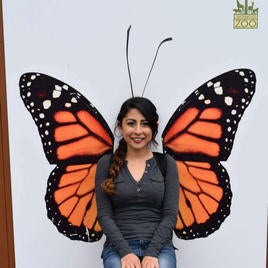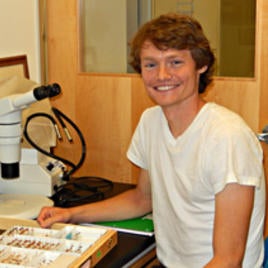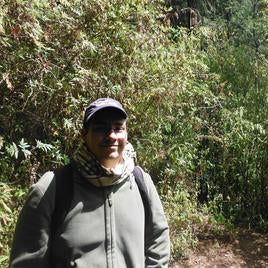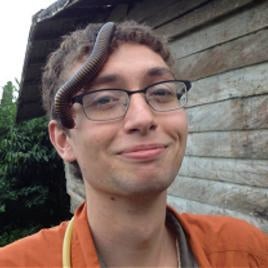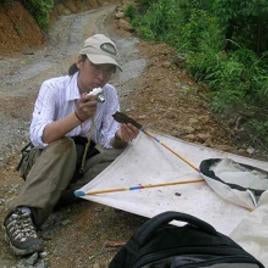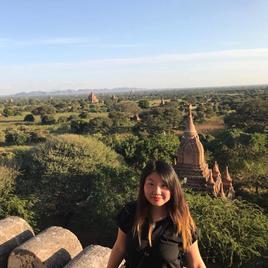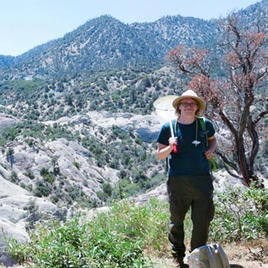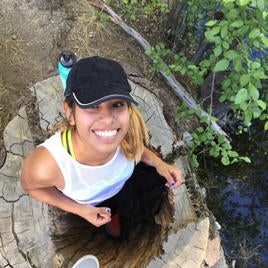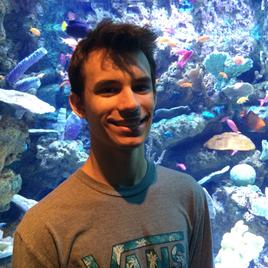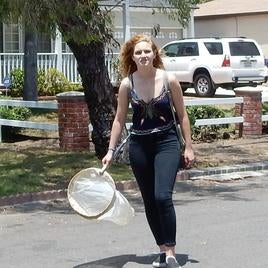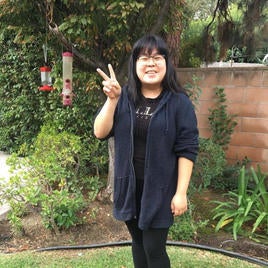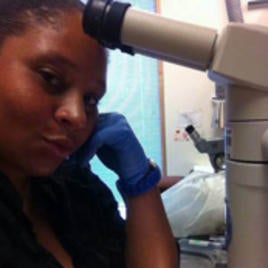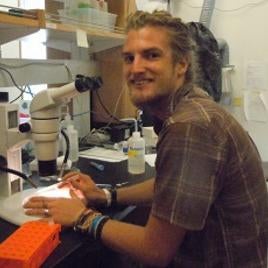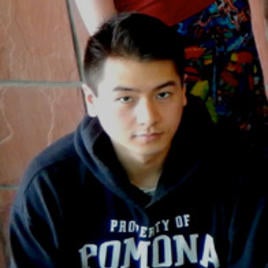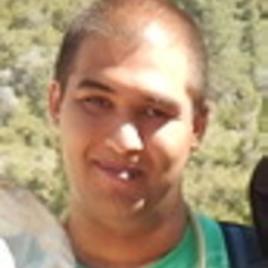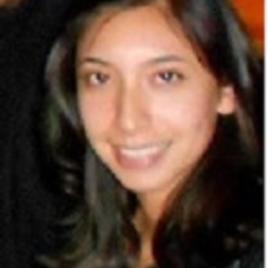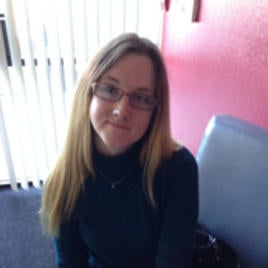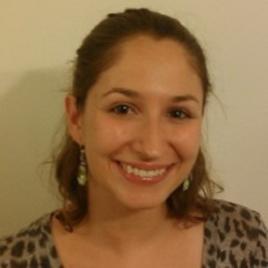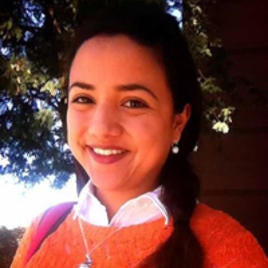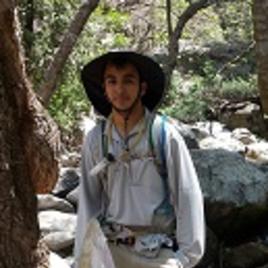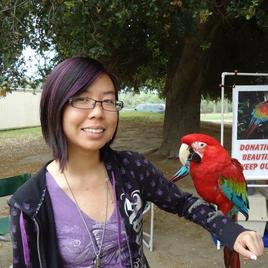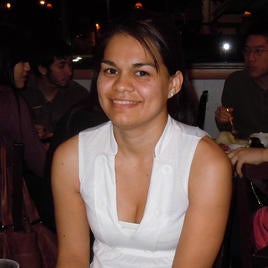Former Lab Members
Grad students and postdocs
Stephanie Castillo
My fascination for entomology and collections-based research sparked my desire to pursue a Ph.D. in assassin bug (Reduviidae) systematics at UCR. Here, my research focuses on taxonomy and phylogenetics, specifically within the corsair or pirate assassin bugs (Peiratinae) and the lobe-headed assassin bugs (Pseudocetherinae). I use molecular and morphological techniques to understand the evolutionary history of assassin bugs and their unique traits, e.g., genital asymmetry, aposematism, and salivary proteins. Through my research, I aim to increase our understanding of assassin bug diversity and evolution to form the foundation for reliable classifications and studies investigating sexual selection and defensive adaptations.
Jamie Ramirez
I joined the lab in the summer of 2021 as an undergrad. I transferred to UCR in the Fall of 2020 as a senior from Fullerton College with an AA in Biology, Math & Science, and Bio technician.
As an insect aficionado I found myself starting out by taking a general entomology course at Fullerton College. I was left feeling energized that I could follow my passion and curious to see where it would lead me. Coming to UCR during the pandemic, online classes didn’t dampen my spirits and being a part of the lab team really solidified that I was on the right path. I am now also part of the BS+MS program in Entomology.
My current research includes the phylogeny of the assassin bug subfamily Epiroderinae, focusing specifically on the genus Porcelloderes. Currently, we are investigating undescribed species using different approaches, including molecular work. This will aid in testing the phylogenetic position of Porcelloderes within Epiroderinae. I’m really looking forward to what findings our data will tell us!
Tatiana Bush
I joined the Heteropteran Systematics lab in the summer of 2019 as an undergraduate researcher through an NSF-REU to describe new species in a small genus within the millipede assassin bugs (Reduviidae: Ectrichodiinae: Ectrichodiella). I was excited to start research on new species and learn how they fit into today’s phylogenies. Since then, I have graduated with my Bachelor of Science in Entomology from UCR and began work as a Master’s student with the Entomology department’s BS+MS program. My current research focuses on the phylogeny of the diverse plant bug subfamily Phylinae. Though a phylogeny currently exists, it is still under-sampled when compared to the large number of taxa found within the subfamily. With a better representative phylogeny, analyses such as divergence dating and biogeography will be possible, and we can also better understand the evolution of host associations across the group.
Alexander Knyshov
E-mail: aknys001(at)ucr.edu, alexknyshov(at)gmail.com
I joined the Heteropteran Systematics Lab in August 2013 as a PhD graduate student. I have received my B.S. and subsequently M.S. in St.Petersburg State University, Russia. My research focus was on taxonomy, phylogeny, distribution and host association of the tribe Orthotylini (Heteroptera: Miridae: Orthotylinae). The primary result of my work was the description of one monotypic genus from Central Asia (link) and taxonomic revisions of two Palaearctic genera (link1 and link2)
The focus of my PhD dissertation was on the systematics of the infraorder Dipsocoromorpha (Heteroptera). In addition to the taxonomic part of the dissertation (revision of Chinannus), I worked towards a more affordable DNA sequencing of the archival insect specimens (link), which I later employed both in a genus level (phylogeny of the Corixidea genus group) and infraorder level (phylogeny of Dipsocoromorpha) phylogenetic projects. Additionally, I worked on a comparative morphology of male genitalic structures of Dipsocoromorpha (link), with the resulting homology hypotheses being used in the above mentioned phylogenetic analysis of the infraorder.
As a postdoctoral scholar, I am working on the phylogenomic analysis of the superfamily Reduvioidea (Heteroptera). I am using large scale DNA sequence data to reconstruct a robust phylogenetic hypothesis of the group. More info and my up-to-date CV can be found on my personal website https://alexknyshov.github.io/
Paul Masonick
E-mail: pmaso001@ucr.edu
Hello! I joined UCR’s Heteropteran Systematics Lab during the summer of 2014 to begin work on my Master’s degree. I have been fascinated by insects for as long as I can remember, but didn’t really picture entomology as a viable career for myself until I was an undergraduate student studying biology at the University of Illinois at Urbana-Champaign. While earning my B.S., I examined the diversity and host specificity of parasitic wasps in Dr. Jim Whitfield’s lab and mating behavior of longhorn beetles in Dr. Larry Hanks’ lab.
At UCR, my current focus is on using molecular data to resolve the phylogeny of ambush bugs in the genus Phymata (Hemiptera: Reduviidae). Small, cryptic and easily overlooked, ambush bugs comprise a diverse group of predatory true bugs that rely on camouflage and powerful raptorial forelegs to capture prey. These enigmatic insects can exhibit a great amount of morphological variation within populations, making identification and classification elusive. Apart from my interest in entomology, I also really enjoy exploring mountains, long distance running and restoring native ecological communities from degraded habitats.
Carlos Rosas
E-mail: crosa012@ucr.edu
Hi there! I joined the Heteropteran Systematics Lab in September 2016 as a PhD graduate student, supported by the UC Mexus/CONACyT fellowship.
I have a Major in Biology from the Universidad Nacional Autónoma de México (UNAM) where I did my research on Largidae: Largus, focusing on a taxonomic revision and updating the distribution records for Mexico. Afterwards, I worked two years as a research assistant with Dr. Harry Brailovsky (IBUNAM), reviewing some heteropteran families such as Anthocoridae, Nabidae, Cydnidae, Coreidae and Miridae.
My current research is mainly on the systematics of the subfamily Mirinae (Heteroptera: Miridae). This study will involve three main components: 1) a taxonomic revision of one or several genera, with emphasis on the Neotropical fauna; 2) a phylogeny of the subfamily Mirinae based on the analysis of combined morphological and molecular datasets; and 3) a study of the evolution of host associations across Mirinae, with emphasis on important genera which are specific plant pests.
Aside from my research interests, scientific outreach is something that constantly motivates me. In my own experience, it has been a true pleasure having the opportunity to explain to people the similarities and differences among bugs, insects, spiders, etc.; and how essential arthropods are to our world and the importance of this group as the most diverse living animals on Earth.
My curriculum vitae (CV) can be viewed here. 
Eric Gordon
I came to the heteropteran systematics lab at Riverside during the summer of 2012 to begin work on my Ph. D and graduated at the end of 2017. Before that, I received a Bachelors of Science in Entomology and Microbiology at Cornell University in May of 2012. My research was focused on systematics and revision of two subfamilies of termite-specialist assassin bugs, the Sphaeridopinae and Salyavatinae. Recent morphological evidence suggests that the neotropical Sphaeridopinae may be sister to the only neotropical genus of Salyavatinae and casts doubt on the monophyly of these two subfamilies (Weirauch 2008). We hope to resolve this question through a combined morphological and molecular phylogeny of these taxa. You can read a blog post about these termite assassins here! In addition, I conducted research on bacterial symbionts in a range of Heteroptera including Triatominae, Largidae and Miroidea.
Stephanie Leon
Stephanie joined the Weirauch lab as an undergrad in the spring of 2012 where she worked on a systematic revision of Australian Phylinae. She later rejoined the lab in June 2013 as a Master’s student working on the exciting Dipsocoromorpha Project. Her project focused on the first phylogeny of Schizoptera, and taxonomic revisions of two subgenera, Orthorhagus and Odontorhagus, in the genus Schizoptera Fieber (62 described spp). Stephanie is now an Assistant Collections Curator at Archbold Biological Station.
Michael Forthman
Michael joined the lab in July 2010 in the pursuit of a Ph.D. in entomology. He conducted research on the systematics and predatory behaviors of Ectrichodiinae, the millipede assassin bugs. His project focused on a revision of the Malagasy Ectrichodiinae fauna, a suprageneric phylogenetic analysis of the subfamily, and combined morphological and morphological analyses and biogeography of Madagascan Ectrichodiinae. With the suprageneric analysis, he explored the evolution of interesting biological phenomena such as aposematism and sexual dimorphism. In addition to systematics, gathered natural history observations of Ectrichodiinae predatory behavior to contribute to a rather small, but growing, body of literature on the subject. Michael has recently joined the Miller Lab at the University of Florida where he studies systematics and evolution of Coreidae, the leaf-footed bugs.
Junxia Zhang
Junxia joined our lab as a post-doctoral scholar October 2013. Her research focused on building multi-gene molecular phylogenies of the subfamilies Harpactorinae (the largest reduviid subfamily) and Emesinae (thread-legged bugs, some species prey on spiders!), investigating the evolution of their predation techniques, exploring their divergence times and biogeographic patterns. She also took the lead on generating a transcriptomic dataset and conducting phylogenomic analyses to reveal the deeper level relationships of Higher Reduviidae.
Sunghoon Jung
Sunghoon was a postdoc in the lab from 2011 to summer of 2012. His research focused on the taxonomy and systematics of Cimicoidea (bedbugs, flower bugs, etc.) and Miridae (plant bugs), including other true bugs, with a great interest of evolutionary history on biological traits. Additionally, Sunghoon was interested in the evolution of traumatic insemination in true bugs, focusing on evolutionary history and arms races between the sexes and females' defensive mechanisms. He is now an Assistant Professor at Chungnam National University, Daejon, Korea.
Dimitri Forero
Dimitri was a postdoc in the Heteroptera lab between fall 2008 and summer 2012. Dimitri is now an Associate Professor at Pontificia Universidad Javeriana in Bogota, Colombia.
Veronica Pereyra
Veronica was a postdoc in the lab in 2010-2011. Her research focused on systematics of thrips. She is now associated with CONICET-Instituto Superior de Entomología “Dr Abraham Willink”, Tucumán, Argentina.
Lily Berniker
Lily was a Master's student in the lab between fall 2008 and winter 2011. Her research focused on taxonomy and systematics of bee-killer assassin bugs in the genus Apiomerus. Lily is now based at the American Museum of Natural History.
Guanyang Zhang
Guanyang was a PhD student on the Reduviid PEET project. He worked on the systematics of Harpactorinae where he investigated phylogenetic relationships with focus on Harpactorini, comparative morphology of sticky trap glands in Harpactorini, and produced a taxonomic monograph of the speciose genus Zelus, the leafhopper assassin bugs. Guanyang is now a postdoc at Arizona State University where he studies systematics and evolution of weevils.
Wei Song Hwang
Wei Song was a PhD student on the Reduviid PEET project. He worked on the systematics of Physoderinae and published a large phylogeny of Reduviidae. Wei Song is now an instructor in the Department of Biological Sciences at the National University of Singapore.
Undergrad students

Madison Hernandez
Madison pursued a B.S. in entomology at UCR and is currently a Lab Assistant in the Weirauch Lab. I joined the Heteropteran Systematics Lab in June of 2016, as part of a research program hosted for stem students. I am currently studying the diets of reduviids, with a particular interest on local assassin bugs, especially Phymata pacifica. I've always loved insects, and loved studying them (the stranger, the better), so choosing a career in the entomology field seemed like the best fit for me.
Joanna Mai
I am a third-year undergraduate pursing a B.S. in Sustainability Studies and I joined the Heteropteran Systematics Lab in September 2016. The opportunity to work in the Heteropteran Systematics Lab has exposed me to the interesting world of Dipsocoromorpha bugs. I am a proud member of the team and I assist by databasing and georeferencing specimens!
Kyle Whorrall
I am a senior entomology undergraduate from coastal Los Angeles. I have been working in the lab on Dipsocoromorpha since winter 2017. Current projects include description of a new genus and species of schizopterid and species diversity assessment of Ceratocombus through barcoding. In addition to insects, my interests include other arthropods and plants. I plan to continue pursuing insect systematics after graduation.
Nallely Centeno Armenta
Nallely was a third year undergrad student pursuing a degree in Biology. I joined the Heteroptera Systematic lab June of 2017 as an intern. Her research focused on molecular data to resolve the phylogeny of the genus Pselliopus. Small bright orange bodies, with black and white striped and antennae distributed from parts of United States to South America.
Victor Ellis
Victor was a first-year student at UCR in the Undeclared Physical Sciences major. He helped the lab with Outreach by creating resources to initiate community interaction and education.
Anna Georgieva
This is my second year at UCR, and I am currently majoring in Biology, but I hope to be switching to Neuroscience soon. I was introduced to Entomology during my Freshman Advising Seminar and I started thinking about how I could incorporate it into my interest in the medical field. I was also interested in it because looking at and studying bugs is something I have never even considered before and I thought that it would be an interesting way to expose myself to new ideas. I initially worked on georeferencing for the ABDC Project, but started research on kissing bug host detection in spring 2015.
Michelle Ly
Hi, my name is Michelle Ly. I am a freshman, majoring in Biochemistry at UCR, and I joined the Heteropteran Systematics Lab September of 2016. As I entered college, I wanted to explore different subjects and gain new experiences, so I was excited to be a part of an entomology lab. Although I constantly get bug bites, I have always found insects fun to observe and hope to learn more about them in my time here. I am currently assisting with the Dipsocoromorpha project by databasing and processing specimen images.
Jacob Tarango
Jacob was a fourth year entomology student, who had a passion for spiders, especially tarantulas and their kin. He worked on a building a phylpogeny and taxonomic revision of the schizopterid genus Ptenidiophyes.
Christy Hoong
Christy was a senior majoring in neuroscience. She assisted with the NSF ARTS Dipsocoromorpha project and conducted research on the evolution of exaggerated head shape in minute litter bugs.
Ishani Richardson
Ishani was a second year undergraduate here at UCR majoring in Biology. She was pursuing a career as an Anesthesiologist. She volunteered in the lab editing images of Dipsocoromorpha and later databasing specimens and updating the database records.
Michael Figlioli
Michael Figlioli was a fifth year majoring in Anthropology, with a minor in religious studies. He assisted with geo-referencing localities for the ADBC data-basing project.
Walena Logan
Walena was a third year junior majoring in Psychology. She had a great interest in Entomology. She assisted with various tasks on the NSF ARTS Dipsocoromorpha project, including sorting bulk samples, gathering locality labels, imaging and conducting literature research on the wing polymorphism within the group.
Bryan Vanderveer
Bryan was a undergraduate here at UCR majoring in Entomology. He assisted with sorting bulk samples from all over the world looking for Dipsocoromorpha under the NSF ARTS Dipsocoromorpha project. He also conducted research on the Identification of Coreidae in the Heteroptera Systematics Lab collection during spring 2015.
Qui Van Truong
Qui Van Truong was a third-year transfer student from Citrus Community College majoring in Entomology. He assisted with databasing and georeferencing for the ADBC databasing project. He also conducted research on predator-prey interactions and camouflage of ambush bugs during summer 2015.
Joyce Zhu
Joyce was a first-year undergraduate here at UCR. She worked on the ADBC Project as a databaser in both the Heteroptera and Hymenoptera Systematics Labs.
Joshua Oliva
Joshua Oliva was a senior undergraduate History: Law and Society major. His love of biology, especially insects, has nudged him into UCR's Entomology department. He hopes to raise awareness in regards to the destruction of native habitats in southern California, specifically, Monarch butterfly milkweed habitats. He is assisting with the ADBC databasing project.
Kimberley Garcia
Kimberley was an undergrad senior in entomology here at UCR. She conducted research looking into gut symbionts of Triatominae and how they affect these insects.
Nicole Pownall
Nicole was a 3rd year entomology undergraduate student. She worked on on the ADBC databasing project databasing specimens and georeferencing localities.
Mike Appel
Mike was a senior entomology undergraduate. He worked on the taxonomy and species delineation of Phymatinae in the Weirauch Lab. He worked on linear and geometric morphometric analyses as well as genetalic dissection and comparison.
Carlos Aguero
Carlos was a fourth year Entomology major. His undergraduate research has been in Urban Entomology, but I've also been employed to work on biocontrol and databasing projects. He assisted with databasing specimens under the ADBC databasing project.
Bridget Gonzalez
Bridget was an undergraduate here as UCR with an interest in Medical and Veterinary Entomology. She was pursuing a career in Veterinary Medicine, in which Entomology plays a significant role. She assisted with sorting bulk samples and databasing specimens for the NSF ARTS Dipsocoromorpha project.
Erin Reilly
Erin was undergraduate here as UCR majoring in Entomology. She assisted with databasing specimens under the ADBC databasing project.
Amy Michael
Amy was an Entomology undergraduate who joined the lab in spring 2013. She assisted with the ADBC databasing project and conducted research on ambush bugs of North America with fellow undergraduate, Sarah Frankenberg. They focused on constructing a preliminary phylogeny, descriptive taxonomy, and developing new identification keys with their own photographic glossary for the genus Phymata.
Mariana Romo
Mariana was an entomology undergraduate student here at UCR. She conducted research on Schizopteridae and constructed keys to the subgenera of Schizoptera and the genera of Corixidea group during Winter 2014.
Alec Yzaguirre Williams
Alec was an entomology undergraduate student at UCR who joined the lab in spring 2014 and assisted with the ADBC databasing project.
Isaac Esquivel
Issac was an entomology student at UCR who joined the lab in the spring of 2012. He worked on the ADBC Tri-trophic Database project which aims to digitize the tri-trophic interactions between Hemiptera, their plant host, and their parasitoids.
Andrew Freedman
Andrew was an undergraduate at Case Western Reserve University working on a dual degree in Systems Biology and Evolutionary Biology. He worked on sorting bulk samples in search of Dipsocoromorpha and contributed to an intercative key for assassin bug subfamilies (Reduviidae).
Tina Kim
Tina was an undergraduate student in Entomology at UCR who joined our lab in summer 2012. In the Heteroptera Lab she conducted research on the Reduviidae that are in California. She focused specifically on the genera of the subfamilies Emesinae, Stenopodaine, and Peiratinae. She also worked on building an identification key for all of the species in each genera.
Kaleigh Russell
Kaleigh was an undergraduate student in Entomology at UCR and joined our lab in spring 2012. Kaleigh worked on a systematic revision of group of Australian Phylini (Hemiptera: Miridae: Phylinae) (directed research project. spring 2012), describing 1 new genus and several species using genitalic dissections, external morphology, and host plant information. Kaleigh also worked on an REU project on assassin bug biodiversity in California. This involved building identification keys to Reduviidae in California, describing a new species of Reduvius Fabricius, and creating species pages for Californian assassin bugs.
Nick Duncan
Nick was a graduate of the Entomology program at UCR and databasing Hemiptera for the Tri-Trophic Database project in our lab.
Claudia Alvarez
Claudia was an Entomology undergraduate who graduated in 2011. She worked in the Heteroptera lab and conducted research, mostly on prey capture and mating behavior of Zelus spp. A publication that features some of these results is in press at the Florida Entomologist.
Elizabeth Romero
Elizabeth minored in Entomology and worked and researched in the lab for several years. Her research focused on molecular phylogenetics of Peiratinae.
Amanda Villareal
Amanda worked in the lab, mostly focusing on specimen databasing for the Apiomerus project.
Brittany Smith
Brittany was an Entomology undergraduate and did research in the lab. She focused on kissing bugs in Southern California and elsewhere. Her research experimenting with the detection of trypanosomes in suboptimally preserved samples were published.
Cole Watson
Cole graduated from the Entomology program in 2011. While an undergraduate, he helped assemble images for an identification key of assassin bug subfamilies.
Grace Radabaugh
Grace majored in Entomology and did research in the lab. She focused on assassin bugs in Madagascar, with emphasis on the charismatic genus Ulpius.
Diane Soto
Diane was an undergraduate student in Entomology at UCR. Diane worked on a systematic revision of a genus of Miridae from Australia (directed research project. spring 2007), learned molecular techniques while gathering preliminary data for a molecular phylogeny of the bee assassins of the genus Apiomerus (Reduviidae), and gathered and organized pdfs for our digital library of Reduviidae. She now works as a technician in the UCR Entomology Department.
James Munro
James was a graduate student in Entomology at UCR and was employed in our lab from spring to fall 2007. He helped to get the molecular lab started, produced a lot of reduviid sequences, and worked on secondary structure aligning these sequences.
Donald Beasley
Donald was a graduate student in Entomology at UCR and participated in our Triatominae survey during the summer 2007.
Kyle Risser
Kyle was an undergraduate student in Entomology at UCR, who started working for our lab in the summer 2007. He initially was involved in our Triatominae survey and did field work over the summer and also took care of our growing lab cultures of assassin bugs (species of Zelus, Apiomerus, Sinea, Macrocephalus). Kyle was also involved in directed research for undergraduates in fall 2007 and winter 2007, where he was looking into pretarsal structures of spider-web inhabiting Emesinae. He went on to pursue his Master's degree at Oklahoma State University and is currently employed there.
Aimee Shore
Aimee worked for our lab during the summer 2007. She was responsible for taking care of our assassin bug cultures, i.e. species of the genera Zelus, Phymata, and Apiomerus. Aimee also databased localities and helped with literature searches.
